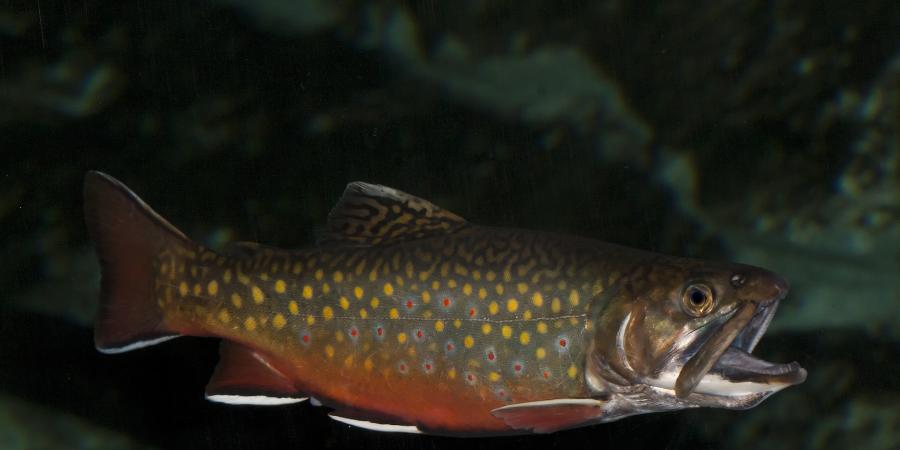Sleek and fast, black and purple, a pattern of mottled sunshine across their backs, the only native stream-dwelling trout, brook trout thrive in cold mountain streams that rush over boulders and form deep pools and cascades. In pre-Columbian times, for millions of years, they inhabited every river, stream, and pond in eastern North America. As the continental glaciers expanded and receded, brook trout followed, from the spine of the Appalachians to New England, New York, and Canada. Surviving in only the coldest and cleanest waters, brook trout are true indicators of watershed health. When excellent water quality abounds, brook trout populations thrive. When their populations are in decline, it's an early warning sign that the whole ecosystem could be at risk.
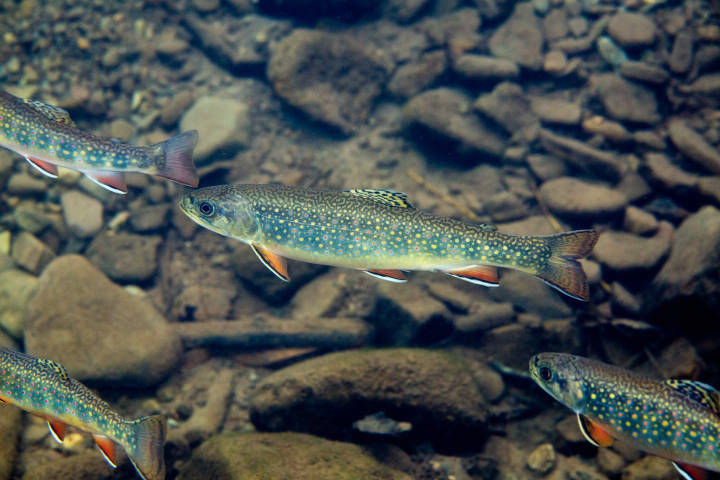
Today, the Ausable watershed is home to three species of trout that are actively fished by anglers. These include brown trout, rainbow trout, and brook trout. The first two are not native to New Yok State and were introduced by fishery managers in the 1890s. Both have been stocked here ever since and are prized by anglers for their aggressiveness and for the trophy sizes that they can grow to after a summer in the Ausable. Occasionally, in the river, more often in its tributary streams, an angler will catch a dark colored trout with vibrant red, white, and black fins and red spots surrounded by blue halos. These are brook trout – one of two native salmonids in the northeastern United States. (Photo credit: Ryan Hagerty, USFWS)
As white settlement spread across the Eastern U.S. and the land was manipulated for agriculture and the mining and lumber industries, brook trout populations diminished from the resulting siltation and runoff, pollutants, and loss of stream shading. When rivers were harnessed for log drives, used to power mills and factories and to irrigate crops, brook trout all but disappeared from major rivers and large streams. Despite the move away from intensive logging and mining, brook trout continue to face human-induced threats. In the Northeast, these include sediment and higher water temperatures stemming from land use and climate change, habitat fragmentation from dams and culverts, and competition from exotic species such as smallmouth bass and non-native trout. Maintaining resilience for brook trout in the face of climate change requires densely forested streams that cool water temperatures, adjacent lands with little nutrient or pollutant runoff, and intact riparian zones that minimize erosion. Many parts of the Ausable River watershed have intact brook trout populations and a high probability that this species will survive in the face of increased summer temperatures over the coming decades. So, protecting and enhancing habitats on and near waterways is paramount for brook trout survival in the region.
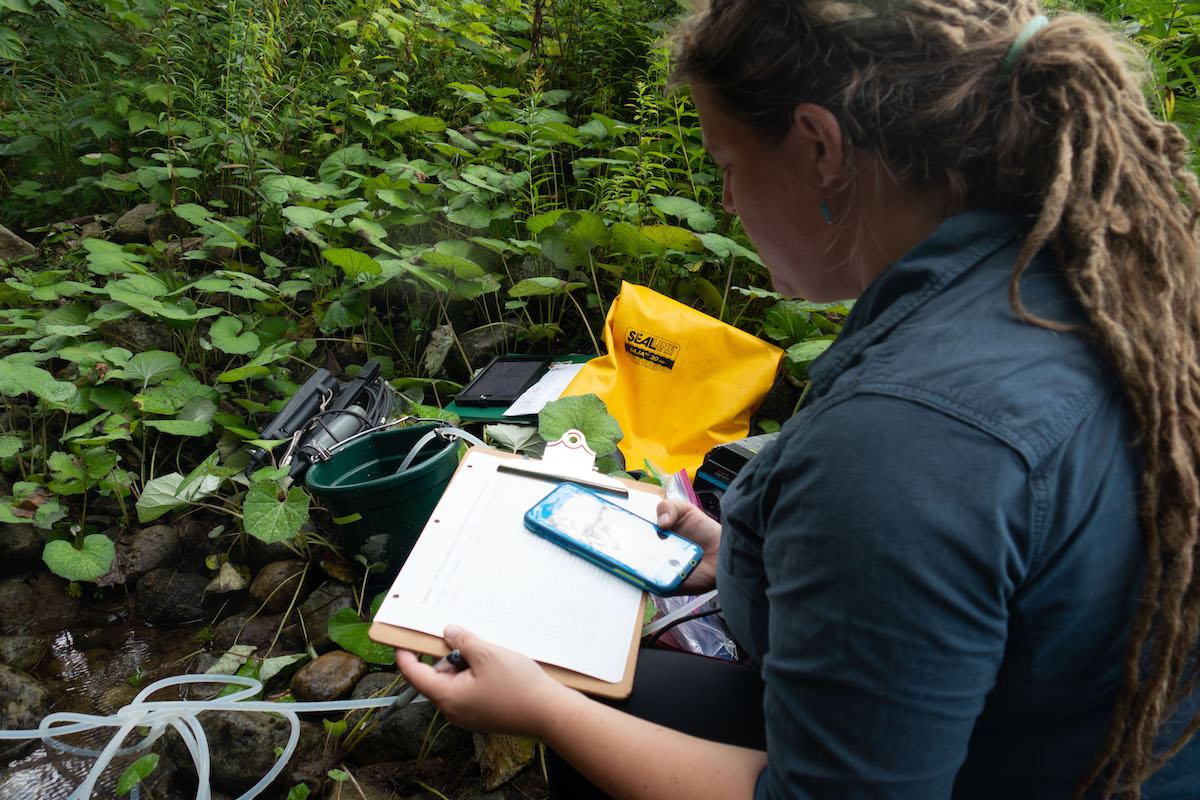
Studying water quality and brook trout abundance and protecting and enhancing habitats on and near waterways is paramount for brook trout survival in the region.
State and federal agencies across the native range of brook trout have identified management priorities for this species, including protection of intact populations, collecting finer scale distribution data, improving water quality, reducing habitat fragmentation, and building partnerships for research and conservation. At the Ausable River Association, our riparian and bank restoration projects help revegetate stream banks and lower water temperatures. Habitat fragmentation here is caused by impassable road crossing structures; we have been working since 2014 to reconnect streams in the watershed by replacing undersized stream crossings with climate-ready culverts. And since 2017, we have been taking steps to understand the current status of brook trout in the watershed. Our long-term goal, working with a variety of researchers, fishing guides, and river lovers, is to understand, predict, and conserve the future of the brook trout of our Ausable mountain streams. Over the past six years, we have been collecting data on trout distribution across the watershed using environmental DNA. We are particularly interested in understanding the spatial distribution of fish across tributary streams and the river itself.
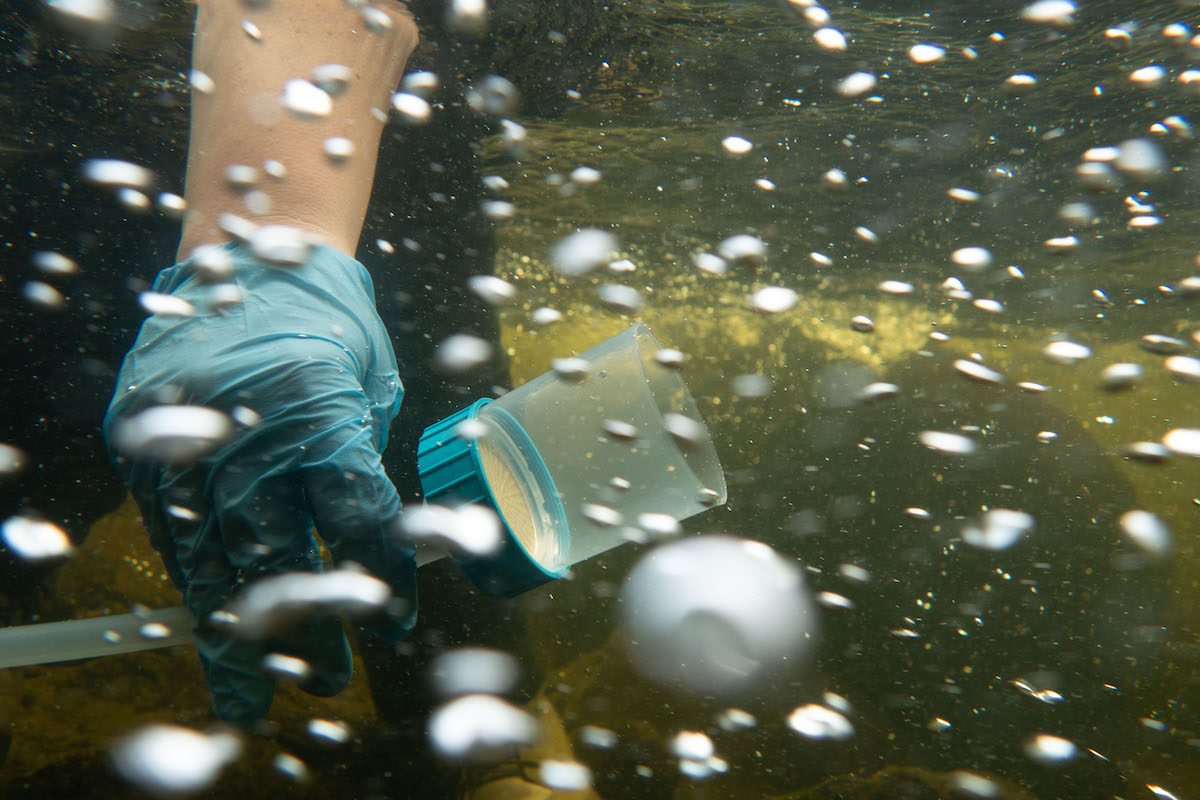
Over the past six years, we have been collecting data on trout distribution across the watershed using environmental DNA. Just a cup of water can tell us if brook trout live in a particular section of river.
As an alternative to employing traditional fisheries surveys, we filter water from sites every kilometer from the mouth of a stream to its headwaters to look for environmental DNA, small fragments of DNA from shed skin cells or waste generated by fish swimming around in the stream. There are enough DNA fragments floating through the stream for us to capture them in a five-liter sample. We filter the water using a vacuum pump and then take the filter back to a genetics lab. There, we run the samples through several stages of processing to extract DNA from the filters and then use a process called PCR (polymerase chain reaction), which allows us to identify the specific DNA fragments from individual species we are looking for (much as COVID tests are run). We use the data to create a heat map of species presence and absence and show the overlap among species in each stream.
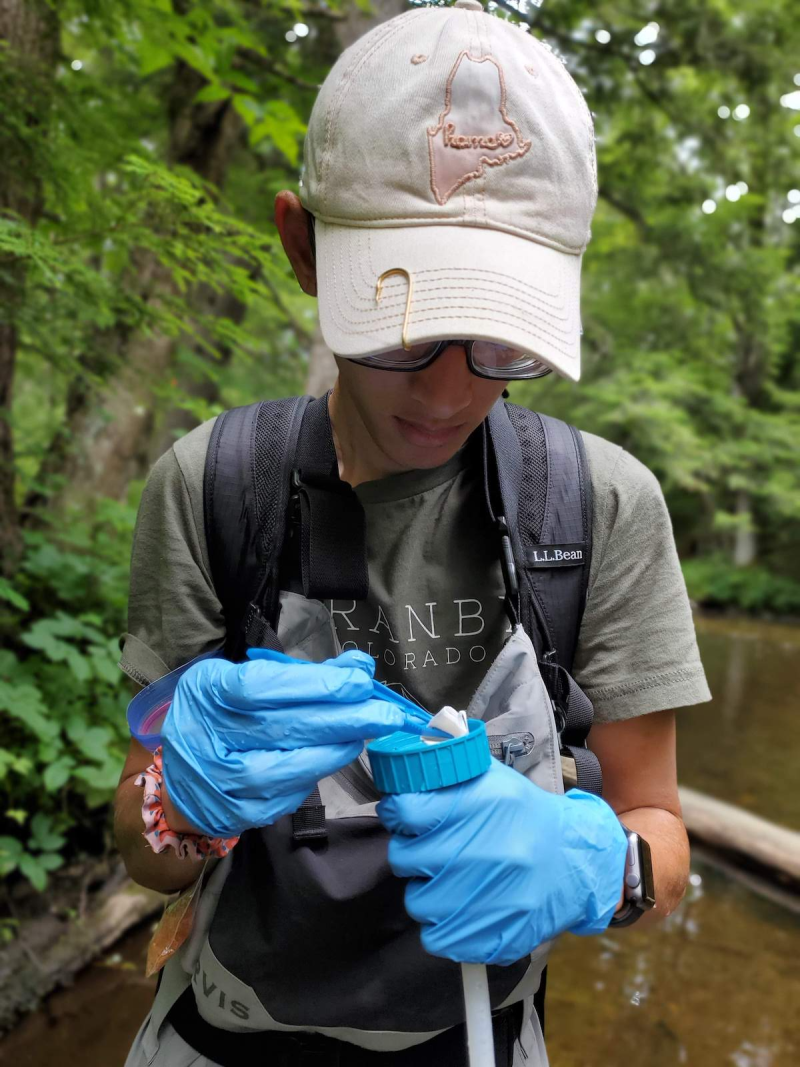
There are enough DNA fragments floating through the stream for us to capture them in a five-liter sample. We filter the water using a vacuum pump and then take the filter back to a genetics lab.
Over the course of the 2021 and 2022 field seasons, we traveled to over 250 sampling sites across the Ausable and Boquet watersheds to filter water for eDNA. We're searching for evidence of brook trout, Atlantic salmon, rainbow trout, and brown trout in our cups of water. A technical research grant from the Lake Champlain Basin Program made this project possible and is helping us understand the current fish distribution in areas that are expected to continue supporting trout populations in a warming climate. By using eDNA to understand the current distribution of brook trout in these streams, we can understand just how important the habitat is and prioritize future conservation and stream restoration efforts in the Ausable River watershed.
Support our biodiverse habitats work for wildlife and their habitats. Give with confidence today!
Now that we have the results of our 2022 field work, we've been able to create detailed maps of the distributions of these fish species using data from previous years. These data are already being used by the Ausable River Association to prioritize stream reaches for future restoration, tree planting, and fish passage projects. In addition to searching for trout in the Ausable, we have expanded this work to include studies on Atlantic salmon spawning and restoration in the Boquet River and all rivers that flow into the New York shore of Lake Champlain. This work continues to grow through partnerships with researchers at the U.S. Fish and Wildlife Service and the U.S. Forest Service. We are excited to continue applying cutting edge science to the conservation of our freshwater ecosystems in the Adirondacks and the Lake Champlain basin.

Detection of brook trout throughout the eDNA sampling locations from 2017-2021. Stay tuned for a full technical report on this work.
Though the scars of historic land use are still apparent on the landscape in the Ausable River watershed, the combination of time and stewardship is helping to restore these habitats and ecosystems to a resilient and robust state. While the headwater streams where brook trout thrive are mostly protected, our patchwork of public and private lands across the river's lower reaches have a grand role to play in the conservation and restoration of this sentinel species. The work of the Ausable River Association, and stewardship by you on your lands, helps to build better habitats for all the wildlife species that call the Ausable home.
Story by Carrie Pershyn, freshwater ecologist and Biodiversity Research Manager.
Sign-up for our e-newsletter to get weekly updates on the latest stories from the Ausable River Association.
